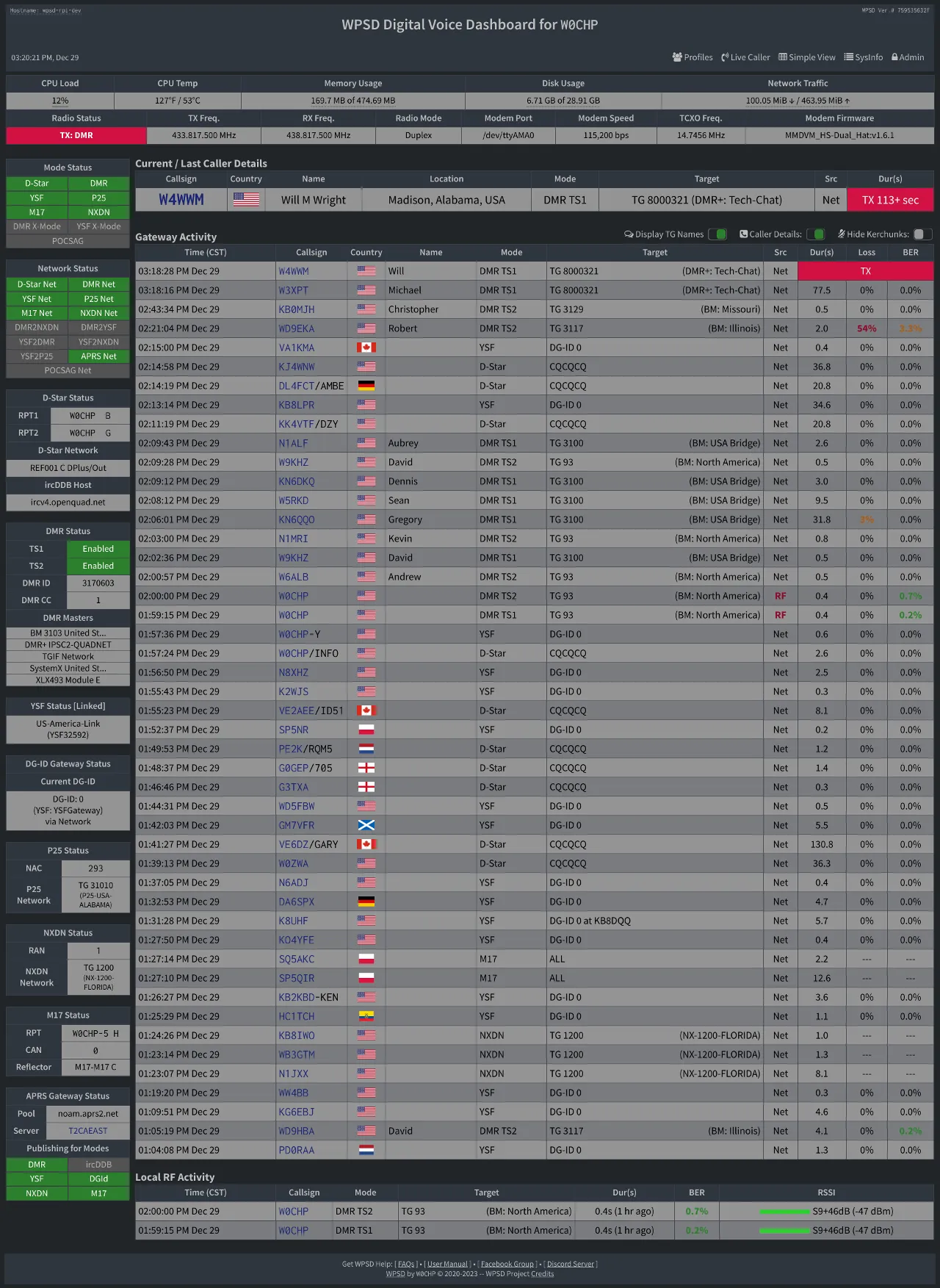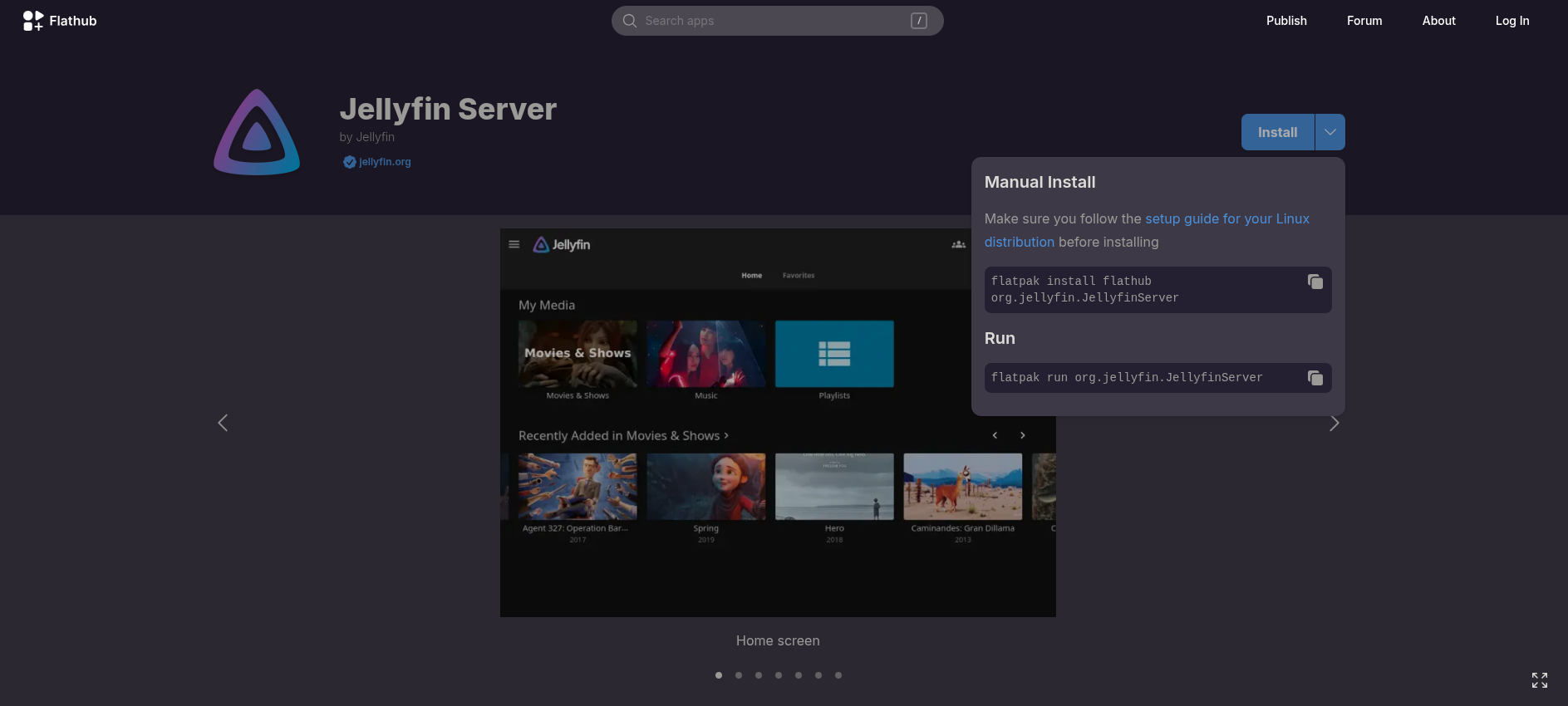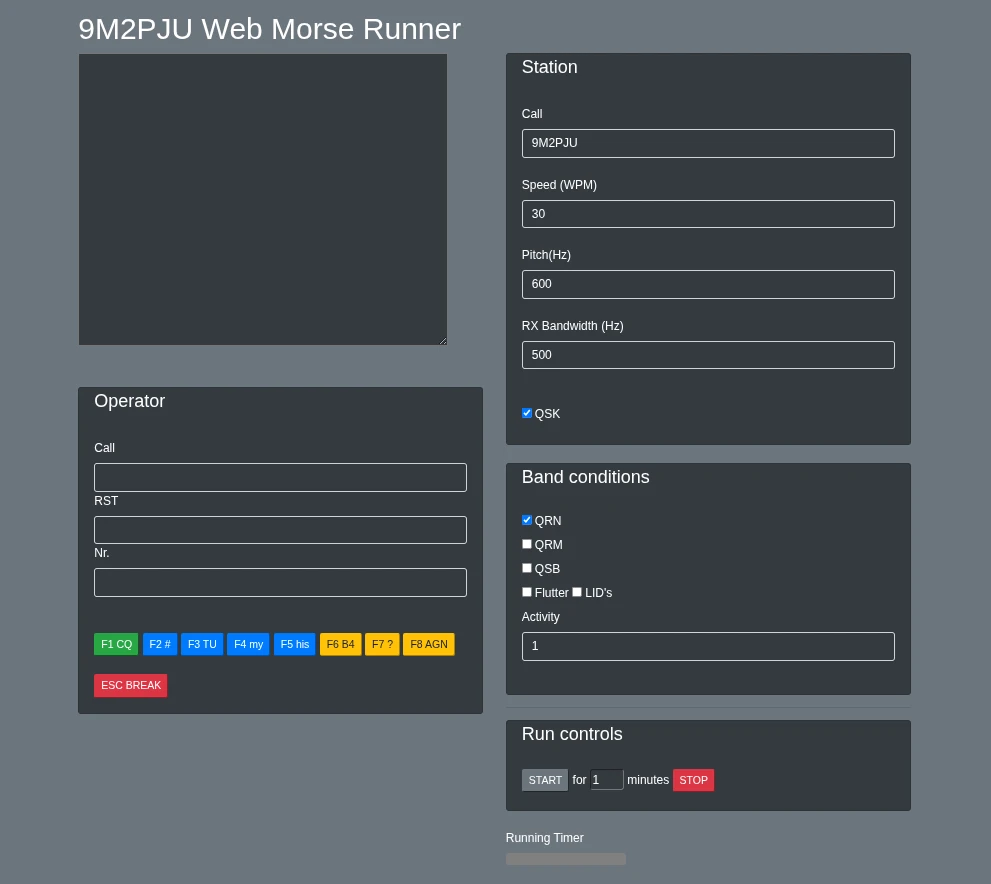amateur radio
digital mode
digital voice
DIY
do it yourself
free open source software
ham radio
open source
raspberry pi
voip
WPSD
AmateurRadio, callsign, digitalcommunication, digitalham, digitalvoice, DMR, Dstar, emergencycommunications, foss, hamcommunity, hamoperator, hamradio, hamradiodigital, hamtech, hotspot, hotspotsetup, M17, MMDVM, NXDN, opensource, P25, pistar, POCSAG, radiodigital, radiohotspot, radionetwork, radiooperator, RaspberryPi, Repeater, WPSD, YSF
9M2PJU
0 Comments
WPSD: The Ultimate Digital Voice Solution for Amateur Radio
Revolutionizing Digital Communication for Ham Radio Enthusiasts
Welcome to the world of WPSD – the next-generation digital voice software suite that’s transforming amateur radio operations worldwide. This comprehensive guide will introduce you to the powerful features of WPSD and provide detailed instructions to get you up and running with this exceptional software distribution.
For the most up-to-date information, always refer to the official WPSD website: https://w0chp.radio/wpsd/
What Is WPSD?
WPSD is a robust, feature-rich digital voice software suite and distribution designed specifically for amateur radio enthusiasts. It powers everything from personal hotspots to full-scale repeaters, offering unparalleled flexibility, reliability, and performance. Used by thousands of ham operators globally, WPSD represents the cutting edge of amateur radio digital voice technology.
Why WPSD Stands Above the Rest
Comprehensive Protocol Support
Unlike many single-protocol solutions, WPSD delivers exceptional versatility by supporting a wide range of digital voice protocols:
- M17 – The newest open digital voice protocol, designed specifically for amateur radio
- DMR (Digital Mobile Radio) – Popular for its spectrum efficiency and worldwide network
- D-Star – Developed by ICOM, offering digital voice and data capabilities
- Yaesu System Fusion (YSF/C4FM) – Combining analog and digital operation with excellent audio quality
- P25 (Project 25) – Originally developed for public safety and emergency services
- NXDN – A narrowband digital protocol offering excellent range
- POCSAG – For data/paging applications
This multi-protocol support means you can communicate across various digital platforms without switching between different software solutions – a true game-changer for modern amateur radio operations.
Community-Driven Open Source Development
WPSD embodies the collaborative spirit of amateur radio by being 100% free and open-source software (FOSS). The advantages are significant:
- Continuous Improvement: Regular updates and new features based on community feedback
- Transparency: Open code means better security and reliability
- Customization: Flexibility to adapt to your specific needs
- Community Support: Access to a knowledge base of fellow users and developers
- No Licensing Costs: Complete functionality without subscription or purchase fees
Extensive Hardware Compatibility
WPSD supports an impressive range of hardware platforms, making it accessible regardless of your preferred device:
General-Purpose Computing Platforms:
- Raspberry Pi Zero 2W
- Raspberry Pi Models 2, 3, 4 & 5
- Nano Pi Neo
Specialized Amateur Radio Hardware:
- BridgeCom SkyBridge MAX and SkyBridge Plus
- DVMEGA Cast Radio
- DVMEGA EuroNode Hotspot
- ZUMSpot Elite with 3.5″ LCD Display
- ZUMSpot Mini 2.4 with LCD Display
- ZUMSpot Mini 1.3 with OLED Display
- ZUMSpot USB Stick
- ZUMSpot MMDVM-Pi Repeater Board
This wide compatibility ensures you can deploy WPSD on existing hardware or choose the perfect device for your specific requirements.
Intelligent Update System
WPSD employs a sophisticated update mechanism that keeps your system current with minimal effort:
- Automatic Nightly Updates: Simply leave your hotspot powered on overnight, and WPSD handles the rest
- Manual Update Option: On-demand updates available through the administrative dashboard
- Rolling Release Model: Continuous delivery ensures you always have the latest features and security patches
- Stability Focus: Updates are thoroughly tested before release to ensure reliable operation
Comprehensive Installation Guide
Before You Begin
To ensure a successful installation, you’ll need:
- A compatible device (see hardware compatibility list above)
- An SD card (minimum 4GB, class 10 recommended for better performance)
- A computer with SD card reader for writing the image
- Internet connection for downloading and subsequent updates
- Balena Etcher, Raspberry Pi Imager, or similar SD card writing software
Step 1: Download the Appropriate Image
Visit the official WPSD website at https://w0chp.radio/wpsd/ and download the correct disk image for your specific hardware from the following options:
Common Platforms:
- Raspberry Pi (Zero 2W, Models 2-5):
WPSD_RPi-Bookworm.img.xz - Nano Pi Neo:
WPSD_NanoPiNeo-Bullseye.img.xz
Vendor-Specific Hotspots:
- BridgeCom SkyBridge MAX/Plus:
WPSD_SkyBridge_Max-Bookworm.img.xz - DVMEGA Cast:
WPSD_DVMega_Cast-Bullseye.img.xz - DVMEGA EuroNode:
WPSD_DVMega_EuroNode-Bullseye.img.xz - ZUMSpot Elite & Mini 2.4 (LCD):
WPSD_ZumSpot_LCD-Bookworm.img.xz - ZUMSpot Mini 1.3 (OLED):
WPSD_ZumSpot_OLED-Bookworm.img.xz - ZUMSpot USB Stick:
WPSD_ZumSpot_USB-Bookworm.img.xz
Repeater Devices:
- ZUMSpot MMDVM-Pi Repeater Board:
WPSD_ZumRadio_MMDVM_Pi_Rptr-Bookworm.img.xz
For security, you can verify the download integrity by checking it against the SHA-256 checksums available on the download page.
Step 2: Write the Image to Your SD Card
- Insert your SD card (minimum 4GB) into your computer’s card reader
- Launch Balena Etcher or Raspberry Pi Imager
- Select the downloaded WPSD image file (.img.xz) – these tools will automatically handle decompression
- Select your SD card as the target
- Click “Flash” or “Write” to begin the process
Critical Note for Raspberry Pi Imager Users: Do NOT use the “advanced options” to create a user, change the password, etc. The “pi-star” user and password are already configured on the disk image and required for proper functioning. You can change the password after initial setup through the WPSD dashboard.
Step 3: Configure Network Access (Optional Pre-Boot Steps)
You have three options for connecting your WPSD device to your network:
Option 1: Pre-configure WiFi (Recommended)
- Visit the WiFi Config File Generator on the WPSD website
- Enter your WiFi network details
- Download the generated configuration file
- Place this file in the boot partition of your freshly written SD card
Option 2: Use Wired Ethernet
- Simply connect an Ethernet cable between your device and your network router
- WPSD will automatically configure itself via DHCP
Option 3: Connect After Boot
- After booting (approximately 5+ minutes), connect to the “WPSD-Setup” WiFi network
- This allows configuration through the dashboard even without pre-existing network access
Step 4: First Boot and System Initialization
- Insert the prepared SD card into your device
- Connect power to boot your system
- Be patient during first boot! The system needs to:
- Expand the filesystem to use the full SD card
- Generate security keys
- Configure initial system parameters
- This process typically takes 5+ minutes but may be longer on slower devices
Step 5: Access Your WPSD Dashboard
After the system has fully booted, access your dashboard using the appropriate URL for your device:
- Standard installations: http://wpsd.local
- ZumSpot installations: http://zumspot.local
- SkyBridge installations: http://skybridge.local
- DVMEGA Cast installations: http://dvmega-cast.local
- DVMEGA EuroNode installations: http://dvmega-euronode.local
If these hostnames don’t resolve on your network, you may need to find your device’s IP address through your router’s client list.
Log in with the default credentials:
- Username:
pi-star - Password:
raspberry
Important Security Recommendation: Change your password immediately after first login via the Configuration page.
Step 6: First Update Before Configuration
Before configuring your WPSD installation, it’s strongly recommended to run a system update:
- Navigate to Admin -> Update in the dashboard
- Click to start the update process
- Wait for the update to complete (the system will notify you)
- Your system will reboot automatically when finished
This ensures you’re starting with the most current version before making configuration changes.
Configuring Your WPSD Installation
After installation and initial update, you can configure WPSD to suit your specific needs:
Basic Configuration
- Navigate to the Configuration page
- Enter your callsign, DMR ID, and location details
- Select your radio/modem type
- Choose which digital modes you want to enable
- Configure your node frequencies as appropriate for your region
- Save changes – the system will apply them and restart required services
Advanced Configuration Options
WPSD offers extensive customization options for more advanced users:
- Firewall Settings: Configure port forwarding and access rules
- Dashboard Customization: Personalize colors and information display
- Expert Settings: Fine-tune system parameters for optimal performance
- Backup/Restore: Create system backups for peace of mind
Keeping Your WPSD Installation Updated
WPSD employs a “rolling release” model, delivering continuous improvements and new features:
Automatic Updates
The recommended method is to leave your hotspot powered on overnight. WPSD will:
- Check for updates automatically during off-peak hours
- Download and install any available updates
- Restart necessary services without disrupting operation
- Apply system-level updates when needed
Manual Updates
If you can’t leave your device powered on overnight:
- Log into your WPSD dashboard
- Navigate to Admin -> Update
- Click to initiate the update process
- Wait for confirmation of completion
For optimal performance and security, regular updates are strongly recommended.
M17 Protocol Support – Special Considerations
The M17 open digital voice protocol is a cutting-edge addition to WPSD, but requires specific firmware versions:
- Updated MMDVM Modem Firmware or MMDVM_HS HotSpot Firmware of at least v1.6 is required
- You may need to update your firmware using the included utilities in WPSD
- Firmware update commands are available on the WPSD website: https://w0chp.radio/wpsd/
Community Support Resources
WPSD boasts a vibrant and helpful community offering multiple support channels:
Official Support Channels
- Facebook Group: Connect with WPSD users and developers
- Discord Server: Real-time chat and troubleshooting
- XLX-493 Module E: The WPSD Chat Module via digital voice
- DMR TalkGroup 3170603: Bridged with BrandMeister for direct voice support
Documentation Resources
- Official WPSD User Manual: Comprehensive documentation (continuously updated)
- FAQs Page: Answers to common questions and issues
- Digital Voice Documentation by Toshen, KE0FHS: Additional background and guidance
Getting Effective Help
Before seeking help:
- Read the FAQs and documentation thoroughly
- Check the known issues section on the website
- Search past discussions in the support channels
- When asking for help, provide detailed information about your setup and the specific issue
Important Note: WPSD is not the original Pi-Star software. Do not ask for WPSD support in Pi-Star support channels.
The Evolution of WPSD
WPSD began as a fork of Pi-Star but has evolved substantially into its own unique project. The name is now a clever recursive acronym: “WPSD Plausibly Stands for Divergence” – highlighting its ongoing development and improvement beyond its origins.
The project acknowledges its foundation and the contributions of many talented individuals:
- Andy Taylor (MW0MWZ), creator of the original Pi-Star software
- Jonathan Naylor (G4KLX), developer of the MMDVM suite
- José Uribe “Andy” (CA6JAU), creator of MMDVM_HS hotspot firmware
- And numerous other contributors who have shaped this remarkable project
Contributing to WPSD
As an open-source project, WPSD welcomes contributions from the community:
- Code Contributions: Help develop new features or fix bugs
- Documentation: Improve the user manual and guides
- Testing: Provide feedback on new releases
- Financial Support: Consider supporting the project sponsors
- Community Support: Help other users in the support channels
Detailed information on how to contribute is available on the WPSD website.
Join the WPSD Revolution Today!
Whether you’re new to digital voice or a seasoned operator, WPSD offers the reliability, flexibility, and community support to take your amateur radio experience to new heights. With its comprehensive protocol support, active development, and growing user community, WPSD represents the future of digital amateur radio communication.
Visit https://w0chp.radio/wpsd/ today to download WPSD and join thousands of satisfied users worldwide!
WPSD – Building the future of digital amateur radio communication, one update at a time.
Made with passion by Chip Cuccio, W0CHP, and the WPSD Project team







Post Comment